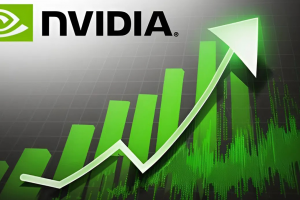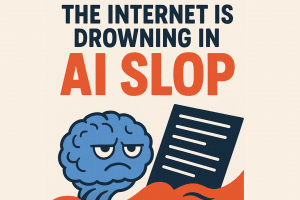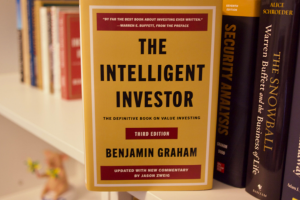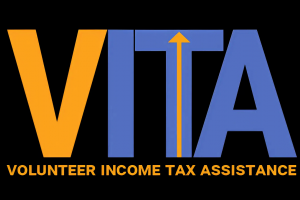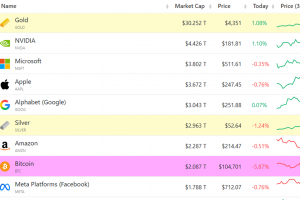The power of video advertising lies not in its creativity alone, but in its ability to deliver quantifiable, measurable, and repeatable business results. Small businesses that integrate video into their marketing see substantial improvements across engagement, conversions, brand perception, and overall customer lifetime value.
1. Introduction
On a crisp Saturday morning in Portland, Oregon, a small family-owned coffee shop posted a 12-second TikTok clip: a barista swirling oat milk into a galaxy-inspired latte. Nothing fancy. Shot on an iPhone. Edited in CapCut in under five minutes. The video wasn’t even intended as an advertisement—it was just a casual share.
By Monday, the video had hit 1.2 million views.
By Friday, the line wrapped around the block.
Within 30 days, revenue jumped 37%.
And today, that same shop sells branded “Galaxy Latte Kits” nationwide.
Stories like this have become the new normal in the US digital landscape. Video—once an expensive and time-consuming medium reserved for big brands—has become the most powerful and democratized form of marketing available to small businesses. Thanks to mobile-first consumption, algorithmic discovery feeds, and AI-driven video tools, the barrier to entry is lower than ever. What used to cost thousands in production and media buying can now be created in minutes and distributed globally at little to no cost.
In the past decade, video has become the beating heart of digital marketing. And in 2025, it's not just an optional channel—it’s essential.
Why?
-
Video consistently outperforms static images in engagement, recall, and conversions.
-
The US market is hyper-competitive, making it critical for small businesses to communicate personality, credibility, and value instantly.
-
Platforms like YouTube, Facebook, Instagram Reels, TikTok, and Google Ads heavily prioritize video content in their algorithms.
-
Advancements in AI, 5G, AR filters, shoppable interfaces, and real-time analytics have drastically increased both the sophistication and accessibility of video advertising.
Small businesses across the United States—from local restaurants and fitness studios to home-service contractors, online boutiques, and tech startups—are discovering that video isn’t about going viral (though that helps). It’s about storytelling, visibility, trust-building, and revenue growth.
More importantly, video bridges the gap between marketing and technology. AI tools now automate editing, scripting, captioning, and even full video generation. Smartphones shoot 4K footage. AR overlays allow shoppers to try products virtually. Platforms like Facebook Ads Manager and Google Ads use machine learning to optimize delivery in real time.
The convergence of these technologies has leveled the playing field.
Small businesses can now run sophisticated video advertising campaigns that rival those of major brands—without requiring a Hollywood budget.
This article will serve as your comprehensive guide, tapping into 15+ years of hands-on experience helping US small businesses grow through smart, tech-forward video strategies. Whether you're a boutique retailer in Chicago, a service provider in Miami, a craft brewer in Denver, or a startup founder in San Francisco, this guide will give you the exact strategies, examples, and tools you can use to win with video in today’s landscape.
Let’s dive in.
2. The Benefits of Video Advertising for Small Businesses
The power of video advertising lies not in its creativity alone, but in its ability to deliver quantifiable, measurable, and repeatable business results. Small businesses that integrate video into their marketing see substantial improvements across engagement, conversions, brand perception, and overall customer lifetime value.
1. Higher Conversion Rates Across Platforms
Numerous marketing studies—including surveys from HubSpot, Wyzowl, and eMarketer—report that video can increase conversion rates by up to 80% or more, depending on placement and audience. Why?
-
Video activates both visual and auditory learning pathways.
-
It demonstrates value in a way that text and images cannot.
-
It reduces uncertainty, helping customers feel confident when purchasing.
On e-commerce pages, simple product demo videos frequently result in 20–60% higher purchase likelihood—especially for small businesses where social proof and trust are critical.
2. Cost-Effective Compared to Traditional Advertising
Television and radio ads once dominated local advertising in the US, but they came with high costs and minimal targeting. Today:
-
$5 per day on Facebook or Instagram can deliver thousands of impressions.
-
TikTok allows organic reach unmatched by most platforms.
-
YouTube provides both organic discovery and highly targeted paid ads for niche audiences.
This is a radical shift for small businesses:
You no longer need big budgets—you need big clarity.
3. Enhanced Engagement on Social Media
Social platforms rank video as their most engaging format:
-
TikTok and Instagram Reels thrive on short-form video designed for virality.
-
Facebook prioritizes video in feed and Ads Manager placements.
-
LinkedIn boosts visibility for B2B videos such as thought leadership clips or testimonials.
Video drives:
-
Higher shares
-
Longer watch times
-
More comments
-
More meaningful connections
This engagement sends strong positive signals to platform algorithms, resulting in more exposure at lower cost.
4. SEO Benefits Through YouTube and Google Search
YouTube is the second-largest search engine, and Google owns it—so video plays a major role in SEO.
Benefits include:
-
YouTube videos ranking on Google for key commercial-intent search terms
-
Increased dwell time on site when embedding videos
-
Stronger domain authority through cross-platform linking
-
Video keywords offering lower competition than blog SEO
For small businesses, ranking a well-optimized YouTube video for niche keywords like
“best plumber in Tampa” or “how to choose a CPA in Phoenix”
can deliver long-term organic traffic.
5. AI-Powered Personalization and Targeting
The next frontier in video advertising is personalization at scale.
Platforms like Meta, Google Ads, and TikTok use machine learning to analyze:
-
Browsing behavior
-
Purchase history
-
Engagement patterns
-
Demographics
This enables small businesses to deliver:
-
Personalized product recommendations
-
Dynamic video ads based on user behavior
-
Retargeting for abandoned carts
-
Lookalike audiences based on high-value customers
When combined with AI-generated video variations (e.g., using Descript or Runway ML), small businesses can run campaigns once thought exclusive to enterprise budgets.
3. Types of Video Advertising and Platforms
The US digital ecosystem is diverse, and each platform caters to different audiences, ad formats, and consumption behaviors. Understanding these distinctions is essential for making strategic choices.
1. Explainer Videos
Perfect for:
-
Tech startups
-
Service-based businesses
-
SaaS tools
-
Healthcare providers
Typically 30–90 seconds, these videos break down complex ideas into digestible visuals and narration. Businesses often use tools like Vyond, Descript, or Canva to produce high-quality explainers affordably.
2. Testimonial and Review Videos
In an economy driven by trust, American consumers rely heavily on social proof. Testimonial videos:
-
Enhance credibility
-
Build emotional connection
-
Address common objections
They perform exceptionally well on Facebook Ads, YouTube pre-roll, and local business websites.
3. Live Streams
Platforms:
-
Facebook Live
-
Instagram Live
-
YouTube Live
-
TikTok Live
Use cases:
-
Q&A sessions
-
Product launches
-
Behind-the-scenes tours
-
Real-time sales streams (especially powerful on TikTok Shop)
Live streams boost authenticity and create real-time engagement—critical for both conversions and retention.
4. Short-Form Videos
This is the hottest category in US marketing today:
-
TikTok
-
Instagram Reels
-
YouTube Shorts
Successful small businesses rely heavily on:
-
Trend-based content
-
Quick tutorials
-
Before-and-after transformations
-
POV storytelling
-
Humorous or emotionally relatable moments
Short-form video is the modern “attention handshake”—it opens the door for deeper engagement.
5. Long-Form Content for SEO & Authority
Platforms:
-
YouTube
-
Facebook Watch
-
Vimeo
Examples:
-
Full product demos
-
In-depth tutorials
-
Case studies
-
Interviews
-
Educational content
This format positions small businesses as industry experts and brings sustainable organic traffic.
6. US-Centric Platform Breakdown
YouTube
-
Best for long-term SEO
-
Highly targeted ad options
-
Ideal for tutorials, reviews, demos, and B2B content
TikTok
-
Best organic reach
-
Great for storytelling, humor, fast-paced tutorials
-
TikTok Shop enables direct shoppable ads
-
Reels for discovery
-
Stories for rapid engagement
-
Shop integration for seamless purchases
-
Strong for local business ads
-
Excellent targeting
-
Great for testimonials and community-driven content
-
Ideal for B2B
-
Excellent for thought leadership and company culture videos
7. Tech Integrations: AR, Shoppable Videos, and More
Modern US consumers expect interactive experiences:
-
AR try-ons for beauty, eyewear, accessories
-
Shoppable videos enabling purchases mid-scroll
-
Interactive polls inside Instagram Stories
-
360° videos for real estate and tourism companies
Small businesses leveraging these tools see higher conversions and deeper engagement.
4. Developing a Video Advertising Strategy
A successful video strategy isn't improvised—it’s engineered. Here’s a step-by-step framework used in professional consulting for US small businesses.
Step 1: Audience Research
Use tools like:
-
Google Trends
-
Facebook Audience Insights
-
TikTok Creative Center
-
Keyword Planner
-
HubSpot CRM data
Identify:
-
Demographics
-
Psychographics
-
Buying motivations
-
Pain points
-
Preferred platforms
Step 2: Crafting a Compelling Message
Strong video advertising is built on clarity. Ask:
-
What problem do you solve?
-
Why should they trust you?
-
Why should they act now?
Use AI tools such as Jasper, Notion AI, or ChatGPT to assist in generating scripts, headlines, hooks, or storyboards.
Step 3: Scripting and Storytelling
Even short-form videos need structure:
-
Hook (first 1–3 seconds)
-
Value (demonstration, story, transformation)
-
CTA (comment, follow, shop, learn more)
For ads, consider frameworks like:
-
PAS (Problem–Agitate–Solution)
-
AIDA (Attention–Interest–Desire–Action)
Step 4: Production on a Budget
Modern small businesses can produce high-quality videos using:
-
Smartphones with 4K capability
-
Lavalier microphones
-
Natural light or ring lights
-
Canva, CapCut, Descript, or Adobe Premiere Rush
Tips:
-
Use jump cuts to increase pace
-
Add captions (70% of viewers watch silently)
-
Maintain branding consistency
Step 5: Distribution Across Platforms
Each platform needs its own format:
-
TikTok: 9–15 seconds
-
Reels: 5–30 seconds
-
YouTube: 1–10 minutes
-
Facebook Ads: 15–30 seconds
Leverage:
-
A/B testing
-
Lookalike audiences
-
Retargeting sequences
Step 6: Optimization Using Machine Learning Tools
Platforms now optimize automatically:
-
Meta’s machine learning identifies high performers
-
Google Ads uses Smart Bidding
-
TikTok’s algorithm learns from engagement patterns
Feed the algorithm with:
-
Frequent uploads
-
High-quality signals (watch time, clicks)
-
Strong narratives
5. Tools and Technologies for Video Creation and Management
The rise of AI and cloud-based software has made professional-grade video tools accessible to small businesses.
1. Video Creation Tools
-
Canva – Templates, motion graphics, brand kits
-
CapCut – Fast mobile editing, auto-captions, sound sync
-
Adobe Premiere Rush – Lightweight professional editing
-
iMovie – Free, simple Mac editing
-
Descript – AI-powered editing by editing text
2. Advanced AI-Driven Tools
-
Runway ML – AI editing, background removals, text-to-video
-
Adobe Sensei – Auto color correction, audio cleanup
-
Synthesia – AI avatars for training videos
-
Pika Labs / Luma Dream Machine – AI-generated animation
3. Analytics and Tracking Platforms
-
Google Analytics
-
YouTube Analytics
-
Meta Business Suite
-
HubSpot
-
Google Tag Manager
These tools help track:
-
Watch time
-
Drop-off points
-
CTR
-
Conversion attribution
-
ROI
4. CRM Integrations
Connect video to:
-
Mailchimp
-
HubSpot CRM
-
Salesforce Essentials
Use cases:
-
Personalized video emails
-
Automated sequences
-
Customer segmentation
5. US-Specific Compliance
Small businesses must follow:
-
COPPA (if content targets minors)
-
ADA accessibility (captions, audio descriptions)
-
Privacy policies for retargeting
6. Measuring Success and ROI
To improve performance, you need to measure the right metrics.
Key Metrics
-
Views – Reach and awareness
-
Watch Time – Engagement quality
-
CTR – Effectiveness of messaging
-
Conversion Rate – Sales or leads
-
Cost Per Acquisition (CPA) – Overall ad efficiency
-
ROAS – Return on ad spend
Tools
-
YouTube Analytics for detailed viewer behavior
-
Meta Ads Manager for custom conversions
-
Google Tag Manager for event tracking
-
Hotjar for heatmaps and engagement visualization
AI-Powered Attribution
Modern attribution models use machine learning to determine:
-
Which ad influenced a sale
-
Cross-device behavior
-
Multi-touch journeys
This is critical in the US market where consumers interact across multiple channels.
7. Case Studies and Real-World Examples
1. NYC Boutique Boosts Sales 200% with Instagram Reels
A Manhattan-based clothing boutique created 10–15 second outfit videos using:
-
iPhone
-
CapCut for transitions
-
Instagram’s music library
A single Reel hit 800k views, resulting in:
-
200% increase in monthly sales
-
12,000 new followers
-
3x increase in repeat purchases
2. California Tech Startup Uses YouTube for Lead Generation
A B2B SaaS startup in San Jose produced 2–3 minute explainer videos using Descript.
Results:
-
40% lower cost-per-lead
-
20,000 monthly organic views
-
3x inbound demo bookings
3. Midwest Restaurant Goes Viral on TikTok
A BBQ restaurant in Kansas posted behind-the-scenes smoking videos.
One clip hit 3.5 million views.
Outcomes:
-
Weekend wait times doubled
-
Catering orders surged
-
Merchandise sales increased
4. Florida Real Estate Agent Uses Facebook Video Ads
A Miami realtor used Facebook Ads + drone videos + retargeting.
Results:
-
8x ROI
-
Properties sold 25% faster
-
Referral network grew dramatically
8. Challenges and Solutions
1. High Production Costs
Solution: Use smartphones, free editing tools, and AI automation.
2. Algorithm Changes
Solution: Diversify across 2–3 major platforms.
3. Ad Fatigue
Solution: Use user-generated content (UGC) and remix formats.
4. Time Constraints
Solution: Batch filming + AI editing + templates.
9. Future Trends in Video Advertising
The next five years will revolutionize how US small businesses use video.
1. VR and AR Ads
Augmented try-ons, immersive tours, and virtual product demos will become mainstream.
2. AI-Generated Personalized Videos
Tools will create dynamic videos tailored to each viewer.
3. Web3 and Blockchain
NFT-based loyalty rewards and decentralized ad networks may emerge.
4. Regulatory Impact
Privacy laws will shape retargeting and data tracking, requiring more first-party data strategies.
10. Conclusion
Video advertising is no longer optional—it’s the backbone of modern digital marketing for US small businesses. With the rise of AI tools, accessible editing platforms, mobile-first consumption, and algorithmic discovery, businesses of any size can now tell their story, reach the right audience, and scale sustainably.
You don’t need Hollywood-level production.
You need authenticity, clarity, and consistency.
Start small:
-
Publish your first Reel
-
Create your first YouTube tutorial
-
Launch a $5-per-day Facebook video campaign
-
Test an AI-generated video ad
Every great video strategy begins with experimentation.
And as technology continues to evolve, the small businesses that embrace video today will dominate tomorrow’s digital economy.
The camera—or smartphone—is in your hands.
It’s time to press record.

















